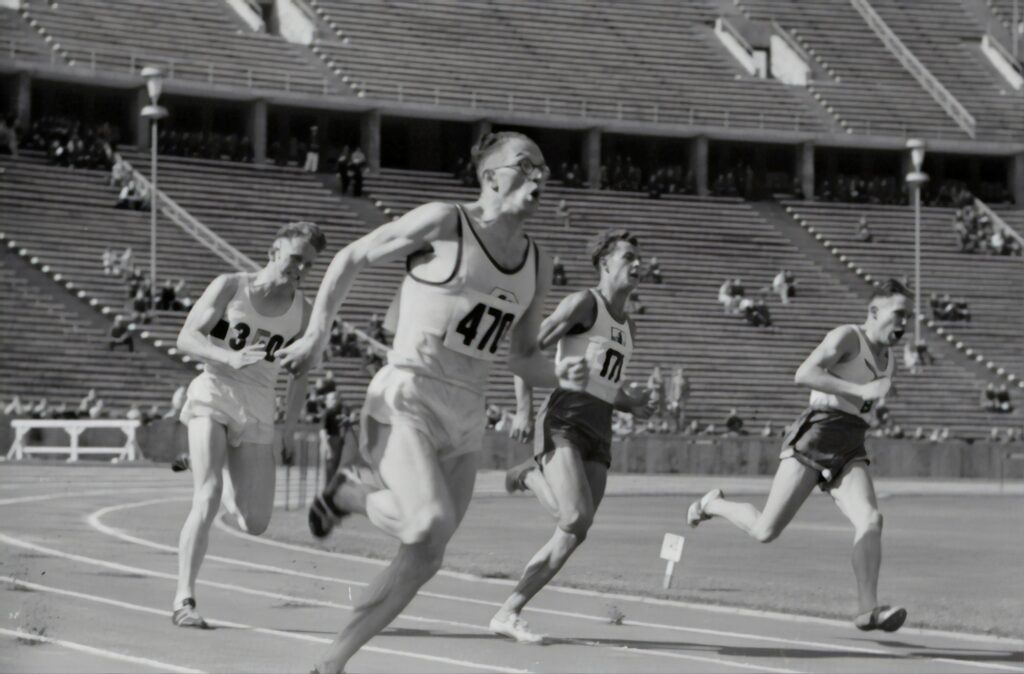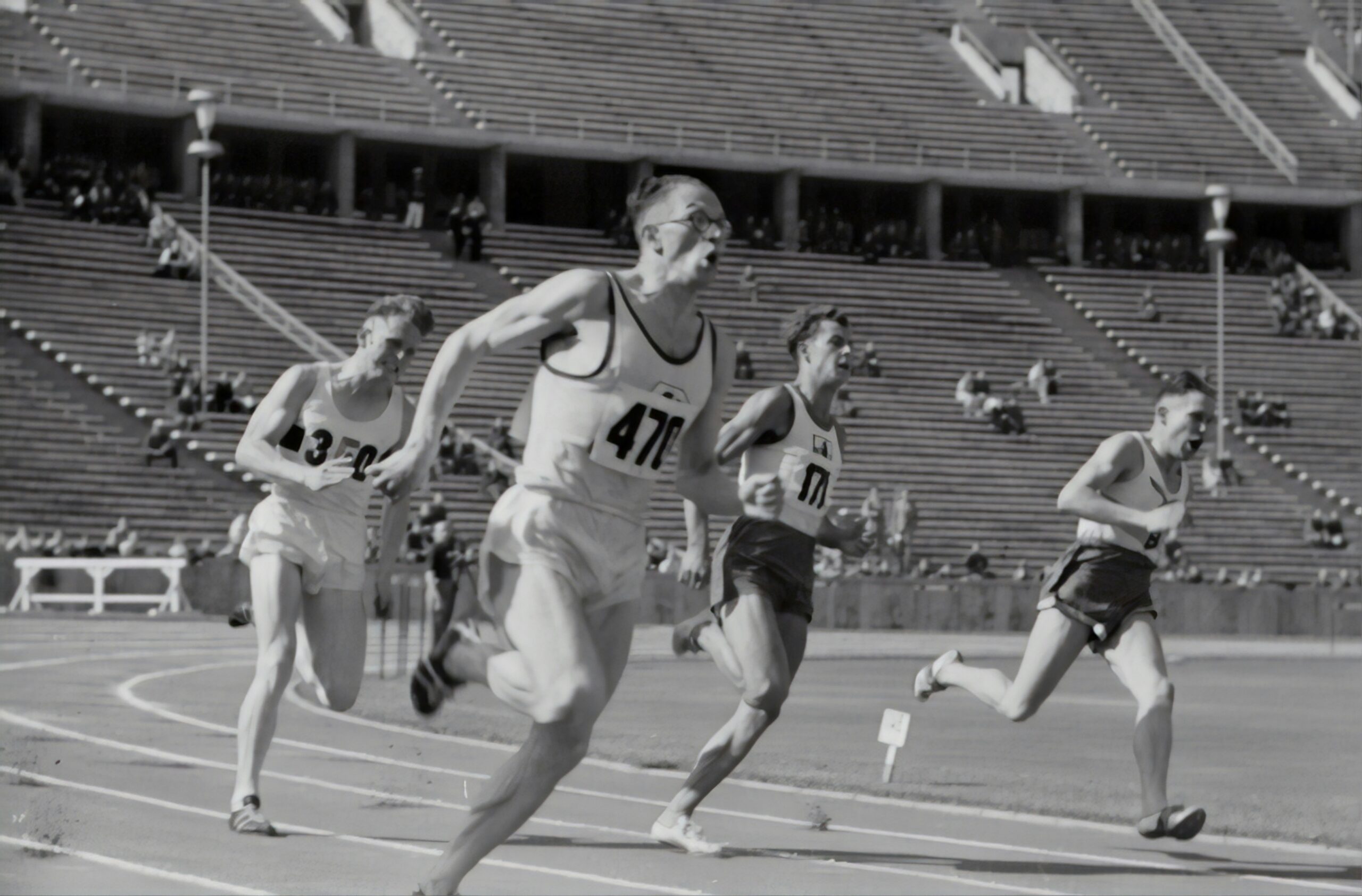In the article “Frame by Frame: Distilling the Blur of Sports Cameras”, the author introduces the work of multimedia artist Paul Pfeiffer, whose career survey is currently being showcased at the Museum of Contemporary Art, Los Angeles. Pfeiffer’s videos explore the concept of removing the chaotic elements of sports footage to focus on the monumental figures of athletes. By stripping away the sound and crowd reactions, Pfeiffer creates a unique viewing experience that allows for an intimate confrontation with these spectacles meant for millions. Through his art, Pfeiffer seeks to provoke a deeper consideration of mainstream entertainment and the faith of the crowd.

Introduction
Overview of the article
This article explores the work of multimedia artist Paul Pfeiffer, specifically focusing on his unique approach to distilling sports cameras and his use of frame-by-frame analysis. It delves into Pfeiffer’s artistic process, themes in his artwork, and the significance of small screens in displaying his videos. Additionally, it examines Pfeiffer’s treatment of sports and his exploration of the connection between religion and sports in his work.
Introduction to Paul Pfeiffer
Paul Pfeiffer is a multimedia artist known for manipulating and distilling broadcast footage, particularly from sports events. His work offers a unique perspective on the fast-paced and exhilarating world of sports, challenging the viewer’s perception and giving them an intimate and stripped-down experience. Pfeiffer’s artwork often focuses on the central figures within these spectacles, isolating moments and emotions that are often blurred or overlooked by traditional sports cameras.
Distilling Sports Cameras
Explanation of sports cameras
Sports cameras are a key tool in capturing the fast-paced action and excitement of sports events. These cameras are designed to track and follow the movements of athletes, providing dynamic and engaging footage. They often utilize techniques such as slow motion and zooming to enhance the viewer’s experience and capture the energy of the game.
The blur effect
One challenge of capturing sports events on camera is the blur effect that occurs when athletes are in motion. This motion blur adds a sense of speed and intensity to the footage, creating a dynamic visual aesthetic. However, this blur can also obscure details and make it difficult for viewers to fully appreciate the nuances of the athletes’ movements.
Challenges of capturing fast-paced sports
Capturing fast-paced sports events presents numerous challenges for filmmakers and photographers. The speed of the action and the constant movement of the athletes make it difficult to compose shots and capture key moments. Additionally, the unpredictable nature of sports makes it crucial for the camera operator to anticipate and react quickly to the action.
Importance of frame-by-frame analysis
Frame-by-frame analysis is a technique used by Pfeiffer to distill sports footage and isolate specific moments or emotions. By breaking down the footage into individual frames, Pfeiffer can capture and emphasize the subtle details that are often lost in the blur of traditional sports cameras. This meticulous analysis allows him to create a unique visual experience for the viewer, delving deeper into the essence of the sport and the athletes.

Paul Pfeiffer: A Multimedia Artist
Overview of Paul Pfeiffer’s work
Paul Pfeiffer’s body of work encompasses various mediums, including video, photography, and sculpture. His work often explores themes of spectacle, identity, and the human experience. Pfeiffer’s unique approach to manipulating and distilling broadcast footage has garnered recognition in the art world and led to exhibitions of his work in prestigious institutions such as the Museum of Modern Art and the Tate.
Recognition in the art world
Paul Pfeiffer’s artistic contributions have been widely recognized and celebrated in the art world. His innovative use of technology and his ability to distill sports footage in a way that challenges traditional perceptions has earned him critical acclaim. Pfeiffer’s work has been exhibited in major museums and galleries around the world, cementing his status as a significant contemporary artist.
Themes in Pfeiffer’s artwork
Pfeiffer’s artwork often explores themes of identity, spectacle, and the intersection of popular culture and fine art. Through his manipulation of sports footage, he delves into deeper questions about the human experience and the role of media in shaping our perception of reality. Pfeiffer’s work encourages viewers to question their own relationship with sports, entertainment, and the cult of celebrity.
Videos without Sound
Description of Pfeiffer’s videos
Many of Paul Pfeiffer’s videos feature found live footage from sports events, which he then manipulates and distills to create a new visual experience. These videos often focus on a central figure, such as an athlete, and remove the surrounding commotion and sound. The result is a stripped-down and intimate portrayal of the athlete, highlighting their emotions and movements in a way that is often overlooked in traditional sports coverage.
Removal of sound
Pfeiffer deliberately removes the sound from his videos to create a unique viewing experience. By eliminating the roar of the crowd and the commentary, he allows the viewer to focus solely on the visual aspects of the footage. This intentional silence serves to heighten the emotional impact of the athlete’s actions and invites the viewer to engage with the footage on a deeper level.
Creating a different experience for the viewer
By distilling sports footage and removing the sound, Pfeiffer creates a different experience for the viewer. Rather than being bombarded by noise and visual chaos, the viewer is offered a more contemplative and intimate encounter with the athlete. Pfeiffer’s videos challenge traditional notions of sports as mass entertainment and create a space for reflection and introspection.

The Significance of Small Screens
Displaying Pfeiffer’s works on small screens
One notable aspect of Paul Pfeiffer’s video installations is the use of small screens to display his videos. These small screens, such as portable projectors or camcorder screens, offer a contrasting experience to the large-scale screens typically used in sports arenas or movie theaters. The size and intimacy of these screens give the viewer a more personal and immersive experience with the artwork.
Intimacy and confrontation
The use of small screens in displaying Pfeiffer’s videos creates a sense of intimacy and confrontation for the viewer. Rather than being overwhelmed by the scale of a large screen, the viewer is confronted with a small and intimate image. This forces them to engage more closely with the artwork, allowing for a deeper emotional connection and reflection.
Comparison to religious icons
Pfeiffer’s choice to display his videos on small screens draws parallels to the experience of viewing religious icons. Just as religious icons are often displayed in small and intimate settings, Pfeiffer’s videos create a similar sense of reverence and contemplation. The small screen becomes a portal into a different world, inviting the viewer to reflect on the themes and emotions captured within the artwork.
Reverence for Sports
Pfeiffer’s treatment of sports
Paul Pfeiffer’s treatment of sports in his artwork is characterized by a combination of reverence and critique. While he celebrates the athleticism and spectacle of sports, he also challenges the mainstream entertainment industry’s commodification of sports and the exploitation of athletes. Pfeiffer’s work raises questions about the ethical and cultural implications of our obsession with sports and the impact it has on individuals and society.
Isolating pain and contradiction
By distilling sports footage and isolating specific moments, Pfeiffer often highlights the pain and contradiction that exists within the world of sports. He captures the vulnerability and struggle of athletes, revealing the physical and emotional toll that competing at the highest level takes on them. Through his artwork, Pfeiffer aims to challenge the audience’s perception of sports as pure entertainment and encourage them to consider the complexities behind the scenes.
Critique of mainstream entertainment
Pfeiffer’s artwork serves as a critique of the mainstream entertainment industry’s treatment of sports. He challenges the idea that sports are simply a form of escapism or mindless entertainment, and instead invites the viewer to critically examine the narratives and power dynamics at play. Pfeiffer’s work encourages a more nuanced understanding of sports and the broader cultural context in which they exist.

Religion as Inspiration
Connection between religion and sports in Pfeiffer’s work
One recurring theme in Paul Pfeiffer’s artwork is the connection between religion and sports. Pfeiffer sees similarities between the intense devotion and fanaticism of sports fans and religious followers. Both sports events and religious ceremonies enact rituals, create communities, and elicit powerful emotions. Pfeiffer’s exploration of this connection raises questions about the role of faith and belief in shaping our experience of sports.
Experimentation in broadcast media
Pfeiffer’s interest in religion and sports extends to the realm of broadcast media. He sees both sports events and religious ceremonies as arenas for experimentation and innovation in media communication. Broadcast technologies, such as live streaming and slow-motion replays, have revolutionized the way sports are consumed and experienced. Pfeiffer’s artwork reflects this fascination with the potential of broadcast media to shape our perceptions and create new modes of spectatorship.
Influence of megachurches and stadiums
Pfeiffer’s connection between religion and sports is further influenced by megachurches and stadiums. Both spaces are designed to accommodate large crowds and foster a sense of community and connection. Pfeiffer sees parallels between the immersive and sensory experiences offered by the megachurches and stadiums, and the emotional intensity evoked by sports events and religious ceremonies. This connection informs his artistic exploration and adds another layer of depth to his work.
Conclusion
Summary of Pfeiffer’s artistic approach
Paul Pfeiffer’s artistic approach centers around distilling and manipulating sports footage to create a unique visual experience. His use of frame-by-frame analysis allows him to uncover hidden emotions and moments that are often overlooked or lost in the blur of traditional sports cameras. Pfeiffer’s videos, displayed on small screens, invite the viewer to engage intimately with the artwork and reflect on the complexities of sports and their cultural significance.
Reflection on the significance of frame-by-frame analysis
The significance of Pfeiffer’s frame-by-frame analysis lies in its ability to strip away the chaos and immediacy of sports events, allowing for a deeper understanding and appreciation of the athletes’ experiences. By isolating specific moments and emotions, Pfeiffer invites the viewer to reconsider their perception of sports as mere entertainment and prompts them to reflect on the broader societal and cultural implications of our obsession with sports. Through his artwork, Pfeiffer challenges us to question our own relationship with sports and the messages that are communicated through broadcast media.


